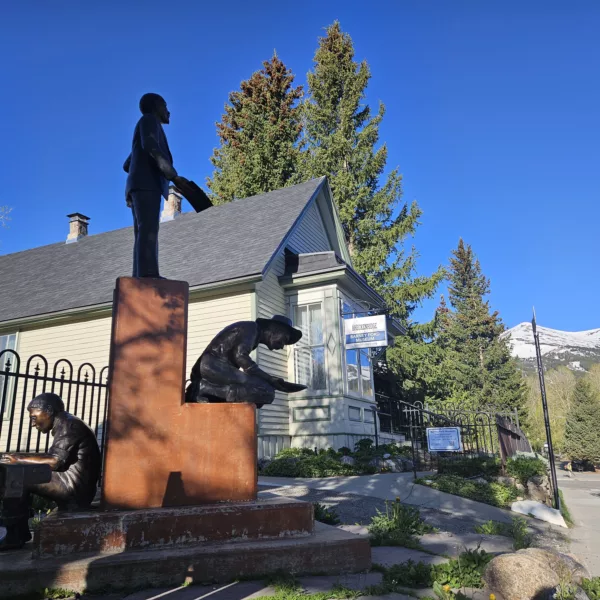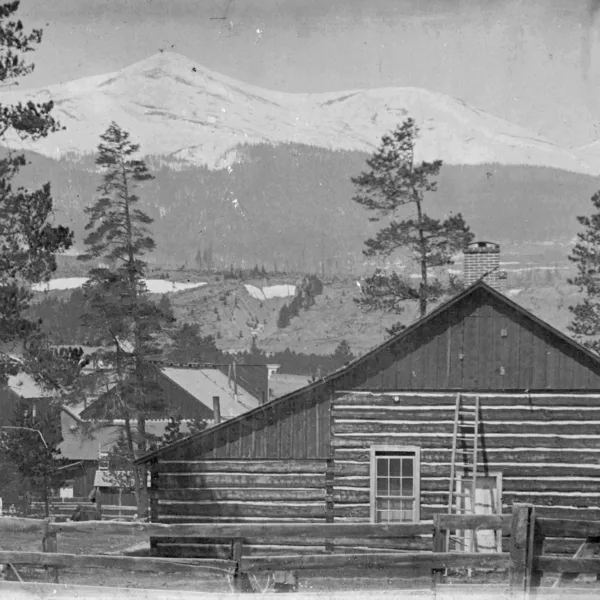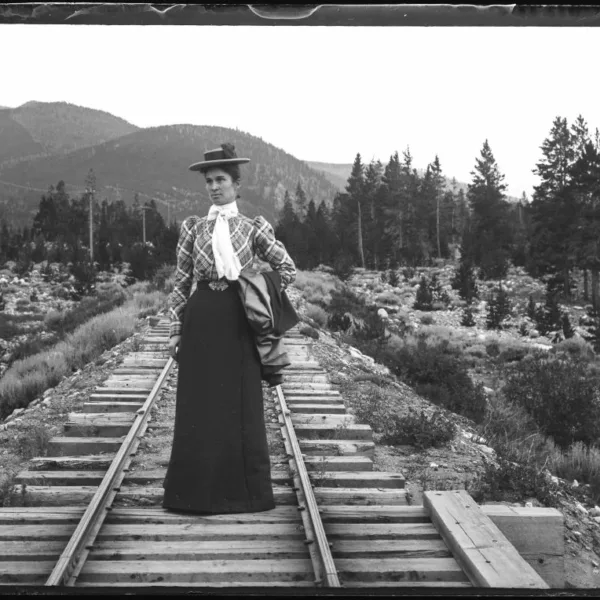Making History Happen: A new exhibit at Lomax
June 18, 2023 | Category: Making History Happen
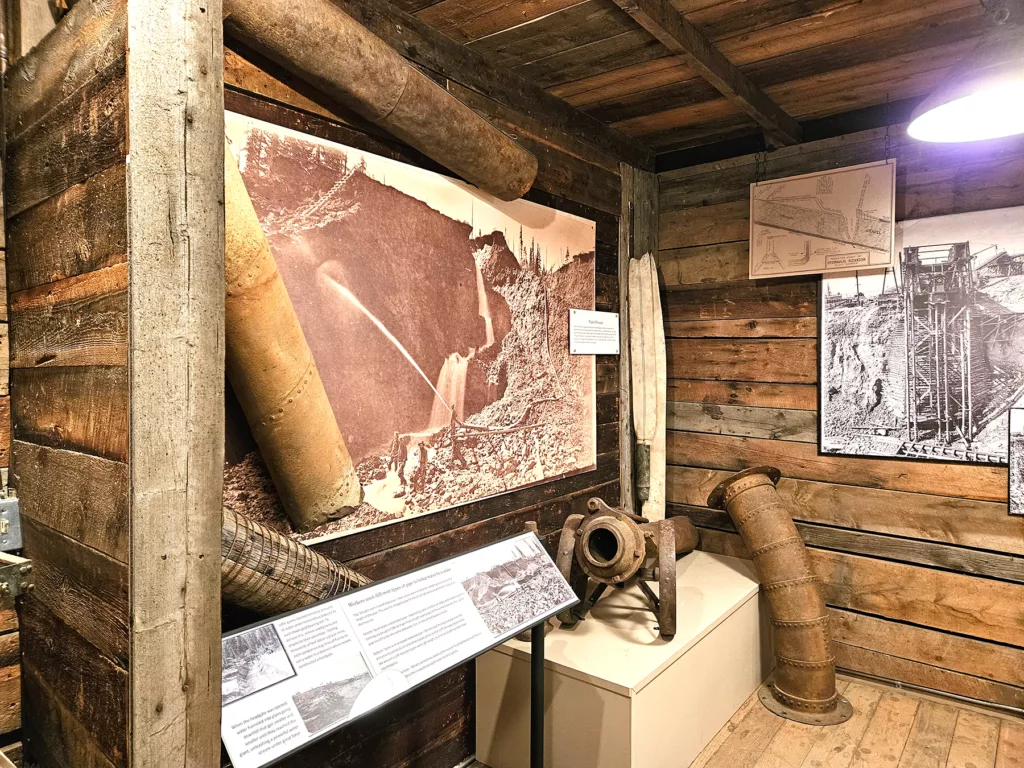
Table of Contents
OFF TO THE LAND OF GLITTERING GOLD
JOHN YOUNG: GOLD PROSPECTOR, TIME TRAVELER
THE STUFF EXHIBITS ARE MADE OF
Hopefully, you noticed all our museums, sites, and tours were closed for the month of May. This might have made you wonder what us history people were doing for the month. We like to think we were “Making History Happen.”
The world around us, our environment, our news, our politics are all history in the making. But how exactly do we preserve our world to make it a resource for the next generation? And how do we display all life’s complexities that our previous generations faced? These questions are a constant struggle in the world of museums and archives and are the reason we created the Making History Happen category in our blog posts.
For example, there’s been a shift in the general public since the COVID pandemic. More and more people want to know the reasoning and the process behind what they’re seeing. Just like a news story gains credibility from including proper sourcing information, so does a museum exhibit – and if you can get a peek into the process, that’s all the better. So, that’s our plan for this month’s blog post: A peek inside the making of our newest exhibit – AKA what we were doing for the month of May.
OFF TO THE LAND OF GLITTERING GOLD
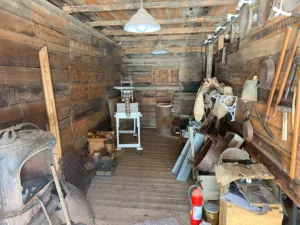
The Land of Glittering Gold exhibit is in the Giger Barn at the Lomax Placer Mine (it’s only viewable with gold-panning reservations), but we’re going to give you the behind-the-scenes scoop on how this exhibit was built. Originally, this site was curated years ago, but we noticed this particular building wasn’t as engaging as it could have been. Our executive director, archivist, and countless staff members spent last fall and this spring cleaning up the site and deciding what had the most historical value. We learned a lot about ourselves and our site in the process – apparently, we like to hoard shovels. We also learned that we had a lot of great materials on hand already, which could really benefit from a new presentation. Finally, we learned the importance of having a great team of people, like Scott Toepfer and Mike Zobbe, willing to take on some pretty wild jobs – you know, things like closing up every last crack to prevent rodent infestation and clearing out 40 years of stuff from the building attics.
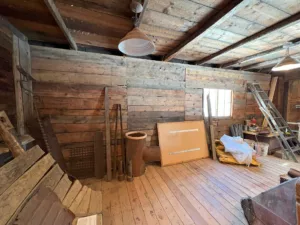 Our cleanup included several trash and recycling trips, one run-in with a hazmat crew, and a lot of work to figure out how to make the vision for this site become a reality. This is one of the parts of history that is particularly difficult: You can’t keep everything. In archives school, they call it “the dark night of the soul” when you stay awake wondering if that piece you chose to deaccession or throw away today should have been kept. We’ve all lost a lot of sleep.
Our cleanup included several trash and recycling trips, one run-in with a hazmat crew, and a lot of work to figure out how to make the vision for this site become a reality. This is one of the parts of history that is particularly difficult: You can’t keep everything. In archives school, they call it “the dark night of the soul” when you stay awake wondering if that piece you chose to deaccession or throw away today should have been kept. We’ve all lost a lot of sleep.
Some of our items were able to go on to live a new life elsewhere – say hi to our stove the next time you’re in Tin Plate Pizza – some took a little trip into storage, and some of our items found a new life with reinterpretation in our new exhibit – anyone care to see a dredge boat model? After all the painstaking choices, we narrowed down our artifacts to be able to present them in a meaningful way to help make history entertaining and educational for our museumgoers.
JOHN YOUNG: GOLD PROSPECTOR, TIME TRAVELER
So once the exhibit’s location was determined and as the site was getting beautified, the question became how do we make this exhibit come to life? The answer to this question came in the form of “John D. Young and the Colorado Gold Rush,” a book published by Lakeside Press detailing the previously unpublished diary of John D. Young.
Young was a successful businessman in Chicago when gold rush fever swept over the country and like many people, he chose to give up the safety and certainty of home for the great possibilities and adventure of becoming a gold prospector. Setting out from Chicago with six other travelers including one of his brothers and his dad, Young traversed the country via train, steamship, mule, and finally on foot to make his way to the Blue River Diggings, or present-day Breckenridge. Now, Young has traversed nearly 200 years of time to help bring history to life in The Land of Glittering Gold.
THE STUFF EXHIBITS ARE MADE OF
Once we had the story set, it came time to decide how the exhibit would be laid out, and what photographs, text, and artifacts would be a part of it. For this, Breckenridge History archivist Kris Ann Knish mocked up a vision of what the exhibit would look like and how it would flow. She did an incredible job of creating a cohesive vision for the exhibit – even if drawing to scale isn’t her strong suit. More trips to Lomax continued over the next couple of weeks, with tape measurer in hand, to get all the details ironed out.
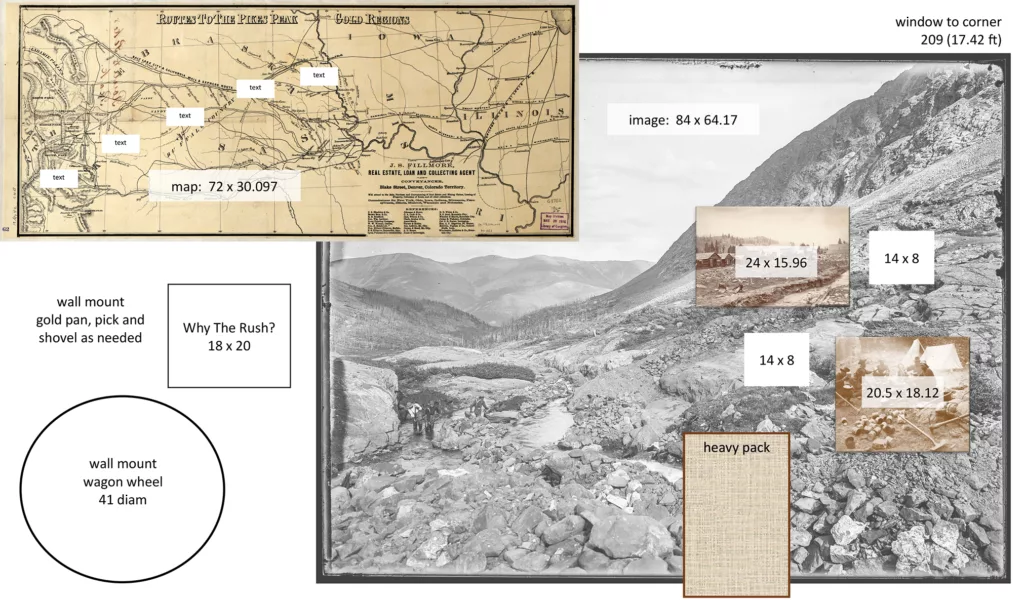
One of the big details to figure out was what we needed to interpret, where we should let Young’s words do the interpreting, and what objects could stand on their own. The exhibit staff spent several days pulling quotes from Young’s diary and putting together text panels to help people understand what they will be looking at in the exhibit. At the same time, we were also working on getting our historical photographs ready for their debut exhibition. This process involved taking rather small original images from the 1800s and enhancing them to be able to go on exhibit – in one case as an 8-foot-wide panel!
After all the text was written and the photographs enlarged we got to the last step in this part of the process: creating titles. After several days holed up in the archives, we were clearly a little punchy by this point, so apologies for all the earworms you’ll see in our headlines, but we were, in fact, Under Pressure.
THE FINAL COUNTDOWN
 Time before our June 1, 2023, opening was quickly ticking down at this point and we were still left with one massive question: Where do you get these enormous panels printed? Luckily, we had worked with a company in Denver, Schiller Reed, on a previous exhibit in the Breckenridge Welcome Center and they were willing to help us out again. This led to our new difficult question: How do you get an 8-foot panel to Breckenridge from Denver? This question was answered by our fearless leader, Executive Director Larissa O’Neil, and a U-Haul. O’Neil made the drive the rest of us were too scared to attempt, and with the help of Schiller Reed, loaded up all our enlarged photographs and text panels into the U-Haul before heading back up the mountain – on May 30.
Time before our June 1, 2023, opening was quickly ticking down at this point and we were still left with one massive question: Where do you get these enormous panels printed? Luckily, we had worked with a company in Denver, Schiller Reed, on a previous exhibit in the Breckenridge Welcome Center and they were willing to help us out again. This led to our new difficult question: How do you get an 8-foot panel to Breckenridge from Denver? This question was answered by our fearless leader, Executive Director Larissa O’Neil, and a U-Haul. O’Neil made the drive the rest of us were too scared to attempt, and with the help of Schiller Reed, loaded up all our enlarged photographs and text panels into the U-Haul before heading back up the mountain – on May 30.
Next up were our fabricating gurus. Tim Johnson, who had also helped with a previous exhibit, created beautiful stands for some of our coolest objects like a dredge bucket and puffer box, while Breckenridge Ironworks managed to whip out an armature for a rocker box in no time flat. Johnson, Toepfer, Zobbe, and the exhibit staff essentially lived at Lomax for the next two days getting every photograph, text panel, tool, and pipe hung on the walls of the Giger Barn – and a couple other locations just in case it wasn’t too much of a challenge already. Did we mention they also built a rock-crushing station? And that we were refinishing the floors and creating a new tour for the Barney Ford Museum at the same time? And taking students on field trips to Iowa Hill and to Valley Brook Cemetery for Memorial Day?
With last-minute touches from some of our Lomax staff, all the buildings – even the bathroom got some upgrades – were ready for the June 1 debut. Hopefully, over the next few months, you’ll get the chance to explore Lomax and see how we’re Making History Happen at that site and all our sites in Breckenridge. In the meantime, we’ll spend the next month recovering from our lazy month of May.

